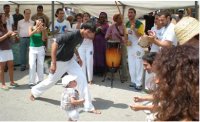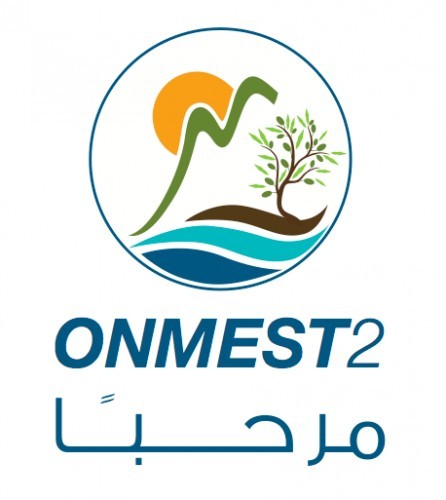
Sharing culture through food
Last Saturday, the second “Taste Culture” event took place in Souk al-Tayyeb, a farmer’s market that is held every weekend in Saifi Village near Gemmayzeh. Two tables were covered with food from Africa, including maandazis, a kind of deep-fried sweet bread from Kenya; kerkedeh, or hibiscus juice from southern Sudan; and a flavorful dish called trondo gasy, or white fish, deep-fried with tomato sauce served over rice, from Madagascar.
Angelina Billiu, a Sudanese refugee and housewife, sold kerkedeh in her traditional attire and wine-colored braids, and discussed with passersby and customers her life and her recipe. “I bought some [hibiscus] flowers from Bourj Hammoud. I washed them and soaked them in water for four hours,” she explains. “And then you just take [the flowers] out and you keep on adding sugar until it is sweet enough. I also added some rose water.” The purple iced drink was the perfect refreshment for shoppers wandering through Souk al-Tayyeb in the sweltering afternoon heat.
On the same table were small, diamond-shaped maandazis sold by the dozen. These Kenyan doughnuts adorned with black seeds are known to be served on any occasion except as a dessert, and although the Kenyan baker who made them wasn’t there to explain her pieces of art, the distinct, mouth-watering aroma of the maandazis spoke for itself.
At the next table, the fish dish cooked by Vivian Ravaorinnoro, a 46-year-old Malagasy woman, was sold out by early afternoon. She came by only toward the end of the festival, having been unable to take off time from working at her employer’s house. According to Ravaorinnoro, the batter used to deep-fry the white fish contains fresh ginger, and served with rice, the dish very much resembles a common meal eaten in parts of Asia. This sort of hybrid cuisine is distinctly Malagasy: Madagascar is an African country with many Southeast Asian immigrants.
Speaking freely with her customers, Ravaorinnoro described her difficult experience working in Lebanon for the past seven years. “I take care [of] my children by myself. I send all my salary” back home, she says.
The purpose of the food festival, according to Simba Russeau, a freelance multimedia storyteller who organized the event, is to honor the 200,000 or so domestic workers in Lebanon, who are mostly of African or Asian origin. By selling their food at an upscale farmer’s market in central Beirut, as well as giving them a chance to interact with Lebanese (and vice versa), the women participants can “share their culture.” The fair also “challenges stereotypes,” by showing Lebanese people that these women of color – generally regarded as just servants and maids – are also foreign businesswomen with complex cultural backgrounds. Russeau envisions the fair to be a “form of economic empowerment” for these women and hopes to organize other similar events.
This delicious food fair was washed down by a performance of Capoeira, a traditional Brazilian martial art dance, which drew a large crowd. Capoeira was a form of resistance for Brazilian slaves shipped from Africa: They transformed their fighting techniques into benign-looking but artistic movements in order to continue training their bodies while deceiving their masters. In the context of these domestic workers working together for social and economic empowerment, the performance added meaning to this event, which was about resisting the status quo of how foreign domestic workers are viewed and treated in this country.
Hayeon Lee, NOW Staff , June 16, 2009
Ref: http://www.nowlebanon.com/NewsArticleDetails.aspx?ID=98851&MID=123&PID=2







 Sarita Salameh
Sarita Salameh
